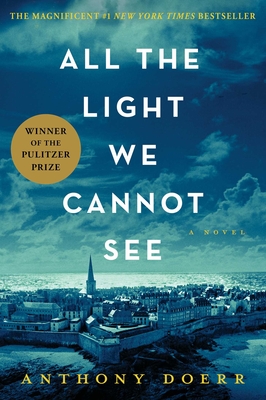All the Light We Cannot See
Anthony Doerr

This is an excellent book, which I feel like I could recommend to almost anyone I know. In certain ways it reminded me of “The Thousand Autumns of Jacob de Zoet”–both are rather long but also compelling and easy reads; both have good writing without being over the top about it; both have a number of memorable characters, both major and minor, with protagonists who are likable but realistic.
There is so much that goes on in the book, but I will just pull a few things out. (Mild spoilers, but nothing serious.) The route that takes Werner to Nazi school, even though he feels strong misgivings about it, seemed totally credible and gave me some views on how such a movement was able to gather power. The relationship between Marie-Laure and her father; the relationship between Frederick and Werner; the relationship between Madame Manec and Marie-Laure. The resistance cell of elderly ladies.
Elise and I had some lengthy discussions about the role of the very short chapters and the frequent jumping back and forth in time. At first I felt annoyed by it. By the latter part of the book, I saw more value in it–it affords the author the ability to slowly change the reader’s perception of a fixed scene by revealing additional, mostly psychological, background elements. But I’m still not totally convinced that I wouldn’t have enjoyed the book just as much if it had narrated the two stories start to finish.
My only pet peeve with the book is Doerr’s tendency to repeat certain constructions, which are nice the first time you hear them but tiresome when repeated. “First floor second floor third” and its ilk, being the worst offenders. There was also one plot point near the end that I thought was unnecessarily tidy, but I won’t say any more to spoil it.
But it is really worth a read! If you are interested, don’t let the length dissuade you as it is a page-turner and a pretty quick read.